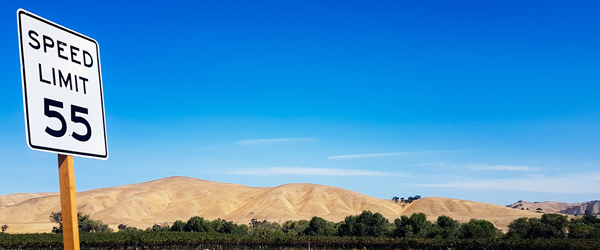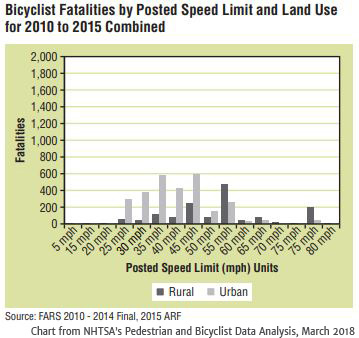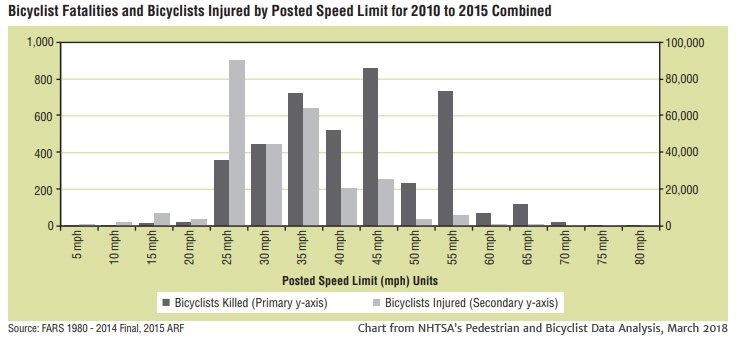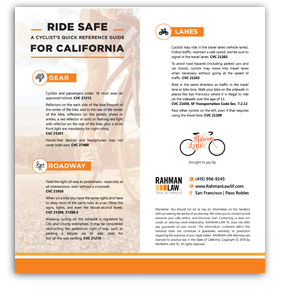
In previous blogs, we’ve talked about the demographics shown as most likely to be involved in a fatal bicycle accident and how speeding contributes to traffic collision deaths. But while it might seem like common knowledge that the speed limit will also factor into cyclist fatalities (faster speeds usually means more powerful impact/injury), the specifics of how the speed limit relates to the outcome of a bicycle accident are not often discussed. And the results may surprise you.
Rural and Urban Jungles for Cyclists
Before we talk about numbers, it’s important to know that there are differences between riding in urban and rural areas when talking about bicycle safety. Urban areas see 60%-71% of bicyclist fatalities across the nation and California is still in the top three states for cyclist fatalities. California’s ranking for cyclists fatalities might have something to do with having the largest population of any state and 87% of those nearly 40-million people living in urban areas (Stanford).
Then speed limit where most bicycle fatalities occur in rural areas is 55 mph.
This speed is the zone with the second most bicyclist fatalities overall; however, for urban riders, 55 mph is only the sixth-ranked speed zone for fatalities. The approximately 29% of total rural cycling crashes with fatalities occurring in a 55 mph zone is significant.
The speed limit where most bicyclist fatalities occur in urban areas is 45 mph followed closely by 35 mph.
Because most bicyclist fatalities occur in urban areas, the data gathered shows urban cyclist collision fatalities can occur in most speed zones from 25 mph to 75 mph with the majority falling between 35 mph and 45 mph. Interestingly, the same speed zones show the most urban pedestrian fatalities, too.

Speed Limits Are Different Than Speeding
The information we just presented comes from speed limits, not speed travelled. Reports vary on the percentage of bicyclist fatalities resulting directly from speeding because being the leading cause is different than being one of several causes and can be difficult to separate. A 2010-2015 report found only 8.6% of bicyclist fatalities resulted directly from speeding (NHTSA, FARS, & ARF). But don’t think speeding isn’t a problem – in San Francisco, speeding is the leading cause of traffic collision deaths (SFPD 2010-2014) and is a leading contributor to traffic collision fatalities nationwide.
This report also found most fatalities for cyclists were occurring in non-intersections. This makes sense when the speed limit with the most fatalities for riders in urban and rural locations combined is 45 mph followed by 55 mph; these speed zones will have fewer intersections and crosswalks than zones with lower speeds.

Bicycle Safety Starts With Awareness
Knowing what factors can lead to or increase the chances of a cyclist fatality can help riders and drivers be more aware of their surroundings. The bicycle accident attorneys at Rahman Law support Vision Zero for San Francisco and we look forward to the day when no cyclist or pedestrian will become a fatality statistic.

